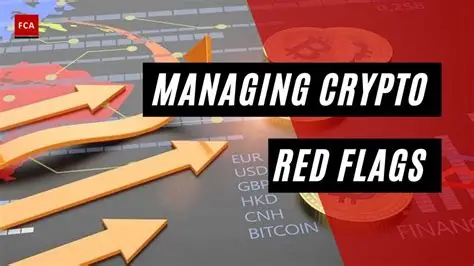Crypto once stood for freedom, innovation, and the future of money. But by 2025, it has also become a digital danger zone, where one wrong move can cost you everything.
From luxury influencers hyping fake tokens to AI-generated deep-fake CEOs fooling investors on Zoom, today’s crypto world is filled with scams hiding behind screens and hashtags.
In this exclusive LLD Insider investigation, we reveal how even smart investors are losing millions and the new scam tactics in the crypto world and most importantly, how you can protect your money.
Table of Contents
1. The Rise of Crypto Scams in 2025.
The crypto world in 2025 is facing a crisis. According to Chainalysis, global losses from crypto scams are expected to cross $25 billion this year alone—a record high. The reason? Scammers are evolving faster than laws can keep up.
Today’s frauds aren’t just basic phishing attempts. We’re now seeing AI-powered rug pulls, clone wallets that look real, and fake NFT platforms that steal funds in seconds. Even experienced investors are getting caught in DeFi stake scams that promise high returns but disappear overnight.
The line between real innovation and digital deception is getting dangerously thin.

2. Top 7 Crypto Scams You Need to Watch in 2025.
Scammers in 2025 are smarter than ever. They use AI, fake apps, and deep fakes to trick even smart investors. Here are the 7 most common crypto scams happening right now:
1. Rug Pulls.
Scammers make a fake project, collect money from people, and then disappear. The “MetaMoon DAO” took millions and vanished.
2. Fake founders on Zoom.
Using AI deep fake videos, scammers pretend to be real CEOs in Zoom calls. The fake Ethereum project “Visage” fooled investors with AI videos.
3. Scam Airdrops.
You get free crypto tokens in your wallet, but if you click on them, your wallet gets hacked. The SolanceX airdrop looked real but stole people crypto.
4. Pump and Dump Groups.
Fake groups on Telegram or Discord tell you to buy a coin — then sell everything after you buy. “VIP Whale Channel” pumped a coin and dumped it to make profits.
5. Fake wallet pop-ups.
Fake MetaMask or Phantom login pages ask for your secret passphrase and steal your money. A scam copied Crypto.com and tricked users into giving access.
6. Fake NFT Projects with High Returns.
Scam NFT sites promise 500% returns — but they are Ponzi schemes. PixelBull Club promised big returns but shut down after taking money.
7. Copycat Wallets & Exchanges.
Scam apps look just like real ones (like Trust Wallet or Binance) but are designed to steal your crypto. A fake app named “TrustWallet” stole thousands of wallets.
This isn’t 2021 anymore. Scammers now sound like investors, lawyers, and tech experts. Be very careful.
— LLD Cyber Threat Analyst
3. Real Stories: Even Billionaires Get Scammed.
You’d think the rich and famous would never fall for scams — but in 2025, even billionaires and celebrities are getting fooled. Here are two shocking real-life stories that prove no one is safe:
A Tech Billionaire’s $30 Million Mistake.
One of the world’s top tech billionaires invested $30 million in a new blockchain energy project in Dubai. The startup looked legit — and the CEO and team even joined meetings on Zoom. But there was one problem: none of them were real.
The entire team was made using AI deep fake technology. Every Zoom call was fake. The company didn’t exist — and the billionaire lost everything.
A Celebrity’s NFT Project Has Gone Wrong.
A famous singer with millions of fans launched a luxury NFT collection. People trusted the brand and spent their money fast — raising $9 million in just a few weeks.
But suddenly, the team behind the project disappeared. The website was shut down. No refunds. Thousands of fans lost their money — and the celebrities claimed they were tricked too.
These real stories are a warning: if billionaires can be fooled, so can anyone. That’s why the LLD Team is here to help you spot the traps before it’s too late.
4. Why Even Safe Investors Are at Risk in 2025.
You might think that being smart, cautious, or experienced keeps you safe in crypto. But in 2025, even the most careful investors are getting trapped and here’s why:
- Fake Zoom Calls with Deepfakes: Scammers now use AI-generated video calls that look and sound exactly like famous CEOs or developers. Investors think they’re talking to the real person — but it’s all fake.
- Hidden Code in Smart Contracts: Some scams hide dangerous tricks in smart contracts that even professional developers don’t catch. Once you connect your wallet, it’s too late.
- Scams on Trusted Channels: Fraud projects pay influencers on YouTube, Twitter/X, or even crypto news sites to promote them. The project looks safe — but it’s a setup.
- Luxury baiting: Some scams are shown in premium magazines, Instagram ads, or luxury travel blogs to look exclusive. They target rich or high-income users who think it’s an elite opportunity.

5. New Tech, New Tricks: Scams Are Getting Smarter in 2025.
Crypto scammers in 2025 aren’t just using old tricks. They’re now using advanced AI and blockchain tools to fool even smart investors and developers.
AI-Generated Whitepapers.
Scam projects use AI to create professional-looking documents (whitepapers) that explain fake ideas in a smart, technical way — making the scam look real.
Voice Cloning of Influencers.
Using AI, scammers can now copy the voice of famous crypto influencers, so it sounds like your favorite YouTuber or expert is promoting the project — even if they’re not.
Decentralized hosting.
Instead of using normal websites, scams are hosted on decentralized servers, which means they’re hard to shut down — even if they’re caught.
Time-Lock Contracts.
Some projects trap your money in smart contracts that lock your funds for weeks or months. By the time you realize it’s a scam, it’s too late to pull your money out.
Real Example: The NeoVault Scam
One project called NeoVault used a Chat GPT style chatbot to answer investor questions in real time. It sounded smart, trustworthy, and well-trained but the entire thing was fake. Even experienced developers were fooled.

6. How to Vet a Crypto Project Like a Billionaire?
Before you invest your money in any crypto project, do what the smartest investors do ask the right questions. The LLD Team recommends this simple 5-step checklist to help you avoid scams and pick projects with real potential.
LLD 5-Point Crypto-Vetting System:
| ✅ What to Check | 🔍 What to Look For |
|---|---|
| Founder Transparency | Is the founder active on LinkedIn? Have they worked on real projects before? |
| Smart Contract Audit | Has a trusted company like Certik or Hacken checked the code for bugs or traps? |
| Tokenomics | Are the returns realistic? Is the total supply limited, or can they keep printing tokens? |
| Lock Period & Vesting | Are team members’ tokens locked for a few years, so they can’t just cash out early? |
| Utility & Roadmap | Does the project solve a real problem, or is it just hype and marketing? |
7. Watch Out for These Regulatory Red Flags in 2025.
In 2025, global regulators are cracking down hard on scam crypto projects. The U.S. SEC, European MICA rules, and other agencies are enforcing new laws and projects that ignore them are a big red flag.
Here’s what to watch for:
🚫 No KYC required.
If a platform says you don’t need to verify your identity (no KYC), it’s likely avoiding the law — and may disappear with your funds.
🚫 Anonymous developers = decentralization.
While some real projects use anonymity, most scams hide the team to avoid being caught. Legit founders are public and accountable.
🚫 Guaranteed 1000% returns.
High, fixed returns are a major red flag. In 2025, any project promising crazy profits is likely a Ponzi scheme or a rug pull.
What do Safe Projects Follow?
Real projects today must follow rules like:
- Reg. CF or Reg. A+ in the U.S. (for fundraising).
- Mica compliance in Europe (crypto transparency law).
- AML & KYC rules for users.

8. What to Do If You’ve Been Scammed?
If you’ve lost crypto to a scam, don’t panic but act fast. Here’s a simple step-by-step plan:
- Revoke wallet access: Go to Revoke. Cash and remove any scam site’s permission to access your wallet.
- Contact a recovery team: Reach out to blockchain investigation companies like Confirm or Cipher Trace. They can help trace stolen funds.
- Report the scam: If you’re in the U.S., file a report at reportfraud.ftc.gov. Also notify your local cybercrime unit if you’re outside the U.S.
- Hire blockchain experts: If a large amount was stolen, you may need a blockchain forensics firm to track and gather evidence.
- Warn others safely: Make a public post (on X/Twitter, Reddit, etc.) to help protect others, but don’t expose personal info or your wallet address.
Warning: Never trust random Telegram recovery agents. Most of them are just a scam waiting to happen.
9. Expert Insights from the Front Lines.
Scammers in 2025 will operate like real startups. If everything looks too polished, take a second look.
— Alex Grant, Blockchain Security Lawyer.
Luxury-style scams are rising fast. Fake NFT drops and premium DeFi apps are targeting high-end users.
— Claire Roux, NFT Alcohol Authenticity Researcher (Paris).
10. LLD Insider’s Final Word: In Crypto, Trust Is the Real Currency.
Crypto has made millionaires. But it has also emptied wallets overnight. In 2025, the biggest danger isn’t just scam it’s thinking it can’t happen to you.
At LLD, we love luxury, beauty, and rare values. But in the digital world, rarity without security is a trap.
As crypto evolves, so should your mindset. Audit everything. Ask questions. Slow down.
Because in this space, the most expensive thing you can lose… is your trust.
⚠️ Disclaimer: This article is intended for informational purposes only and does not constitute financial or investment advice. The LLD Team recommends consulting certified professionals and conducting full due diligence before engaging in any cryptocurrency investment.
TRENDING ARTICLE

Want your crypto to make money while you sleep?
Get my free PDF guide with 5 passive crypto income ideas using staking, lending, and DeFi.
👇 Enter your email below to learn how!
JOIN THE JOURNEY
Be the first to get travel guides, luxury tips, crypto insights & smart money moves — straight to your inbox.
👇 Enter your email below to learn how!
EXPLORE MORE LUXURY LIFESTYLE DARIES
AMERICAS
Travel across the USA, South America, and everything in between. From beaches to big cities, find fun the Americas.
EUROPE
Old cities, beautiful streets, and amazing food. Explore Europe’s charm, history, and luxury — all in one place.
LUXURY WATCHES
More than just time — these watches tell success stories. Find top brands, buyer tips, and timeless pieces you’ll love.
FASHION & JEWELRY
From trending outfits to classic diamonds.
Explore looks that feel rich, stylish, and totally you.
ASIA
Colorful cultures, peaceful temples, and tropical vibes. Discover hidden gems and affordable luxury all across Asia.
CAR & PRIVATE JET
Fast cars. Private jets. The ultimate luxury lifestyle. Get tips, stories, and insider info on travel in style.























